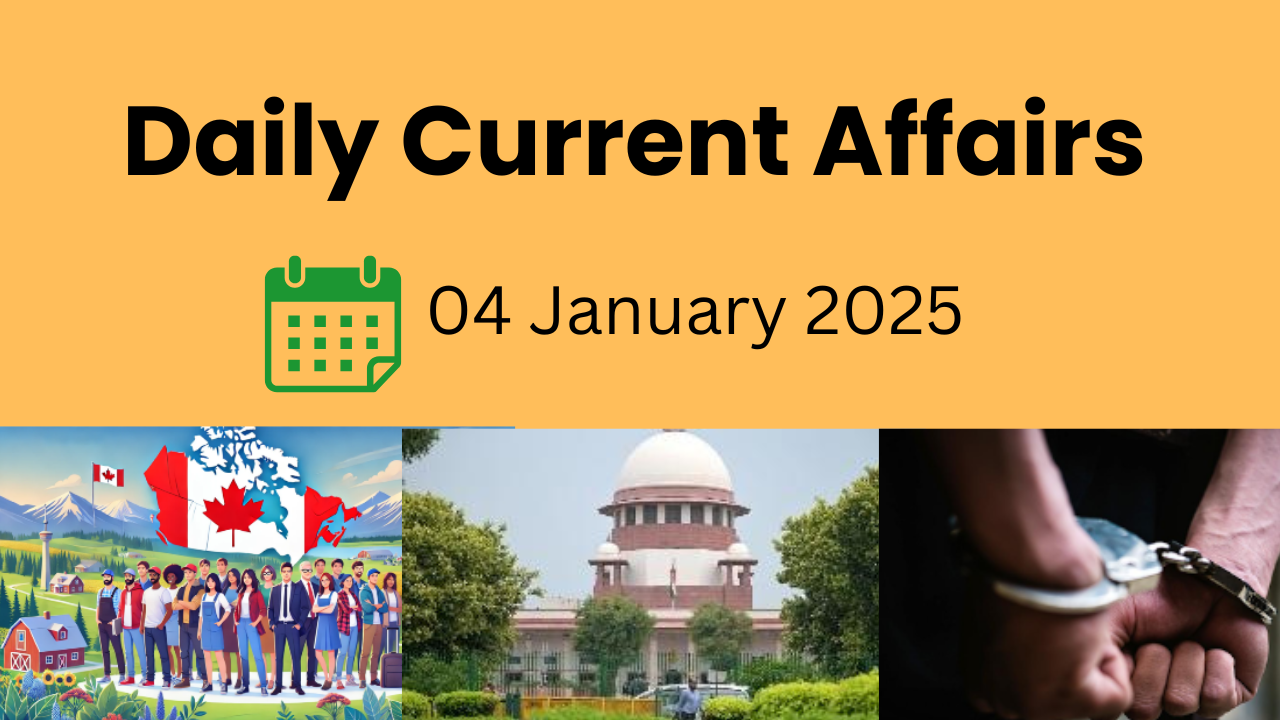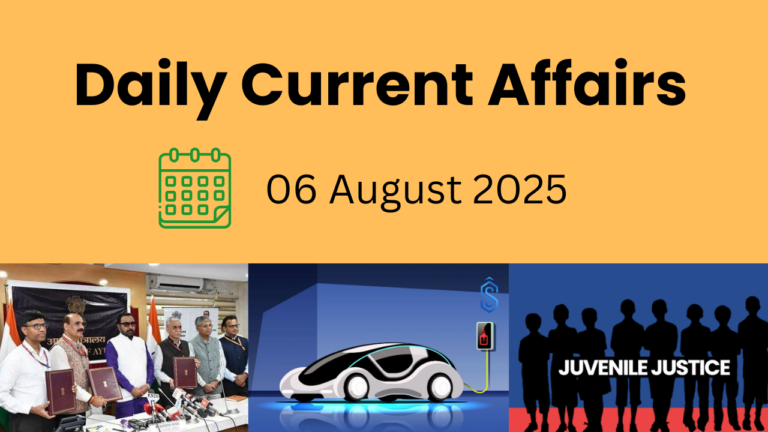1. Centre Revamps Prison Manual to Combat Caste-Based Inequality
Context: The Union Home Ministry has amended the Model Prison Manual (2016) and the Model Prisons and Correctional Services Act (2023) to eliminate caste-based discrimination in Indian prisons.
The move addresses concerns raised by the Supreme Court regarding pervasive caste disparities, overcrowding, insufficient prison staff, and poor treatment of inmates.
Understanding the Prison Manual in India:
Constitutional Framework:
- Prisons fall under the State List in the Seventh Schedule of the Constitution.
- State Governments are solely responsible for prison administration, governed by the Prisons Act, 1894, and respective state prison manuals.
Role of the Model Prison Manual:
- Drafted by the Bureau of Police Research and Development (BPR&D) under the Ministry of Home Affairs (MHA).
- Ensures uniformity in principles governing prisons across states and union territories.
- The Model Prisons and Correctional Services Act (2023) further enhances comprehensive prison administration reforms.
Current Scenario of Caste Disparities in Prisons:
- NCRB’s Prison Statistics (2022):
- Scheduled Castes: 22.4% of the prison population (only 16.6% of the general population).
- Scheduled Tribes: 11% of the prison population (only 8.6% of the general population).
- Key Issues:
- Manual labor division, segregation in barracks, and discriminatory policies against denotified tribes and habitual offenders reflect systemic inequalities.
Judicial Interventions:
The Supreme Court declared several prison manual provisions unconstitutional for violating:
- Article 14 (Equality before the law)
- Article 15 (Prohibition of discrimination)
- Article 17 (Abolition of untouchability)
- Article 21 (Right to life and personal liberty)
- Article 23 (Prohibition of forced labor)
The Court directed all states and union territories to revise their prison manuals to eliminate discriminatory practices.
Key Features of the Model Prison Manual (2016):
Institutional Framework:
- Outlines the roles and responsibilities of prison staff, ensuring an efficient hierarchy for prison management.
Custodial Management:
- Establishes procedures for admission, classification, and transfer of prisoners while maintaining discipline and security.
Medical Care:
- Details medical examination and treatment protocols, emphasizing regular health check-ups and proper facilities.
Rehabilitation and Welfare:
- Focuses on reformation and reintegration through vocational training, education, and after-care programs.
Special Categories of Prisoners:
- Includes guidelines for managing women prisoners, young offenders, and high-security prisoners.
Key Provisions of the Recent Amendment:
1. Prohibition of Caste-Based Discrimination:
- Explicitly bans segregation, classification, or discriminatory allocation of work based on caste.
2. Enforcement of Anti-Manual Scavenging Act:
- Implements the Prohibition of Employment as Manual Scavengers and their Rehabilitation Act (2013) within prisons.
- Prohibits manual scavenging or hazardous cleaning of sewers and septic tanks in prison facilities.
3. Redefining Habitual Offenders:
- Aligns the definition of habitual offenders with Supreme Court directives and state legislation to prevent misuse.
Impact and Significance:
1. Promoting Equality:
- These amendments are a milestone in ensuring a fair and humane prison system.
- They address systemic caste-based inequalities, promoting inclusivity and non-discrimination.
2. Upholding Human Rights:
- The changes emphasize dignity and respect for prisoners, irrespective of their social background.
- Reflects a broader commitment to social justice and human rights in the criminal justice system.
Conclusion:
The Centre’s reforms to the prison manual signify a progressive step toward dismantling caste-based discrimination in prisons. By fostering equality, modernizing prison administration, and ensuring the dignity of inmates, these changes pave the way for a more just and inclusive criminal justice system in India.
2. India Submits Fourth Biennial Update Report to UNFCCC
Context: India has presented its Fourth Biennial Update Report (BUR-4) to the United Nations Framework Convention on Climate Change (UNFCCC). This report outlines India’s Greenhouse Gas (GHG) inventory and the proactive measures taken to mitigate emissions and combat climate change.
Key Highlights of the Report:
1. GHG Emission Reduction:
- India achieved a 36% reduction in GDP emissions intensity between 2005 and 2020, progressing towards its 45% reduction target by 2030.
2. Sectoral Contribution to Emissions:
- Energy: 75.66%
- Agriculture: 13.72%
- Industrial Processes: 8.06%
- Waste: 2.56%
3. GHG Composition:
- Carbon Dioxide (CO₂): 80.53%
- Methane (CH₄): 13.32%
- Nitrous Oxide (N₂O): 5.13%
4. Progress Towards NDCs:
- Emission Intensity: Reduced by 36% from 2005 to 2020.
- Non-Fossil Fuel Capacity: Reached 46.52%, with renewable power capacity growing to 203.22 GW.
- Carbon Sequestration: An additional 2.29 billion tonnes of CO₂ absorbed through afforestation efforts from 2005 to 2021.
5. Net-Zero Ambition:
India remains committed to its goal of achieving net-zero emissions by 2070 while advancing its climate commitments.
Challenges in Combating Climate Change
1. Financial Needs:
- Enhanced funding is critical for scaling up mitigation and adaptation efforts.
2. Technological Advancements:
- Access to cutting-edge tools for renewable energy, carbon capture, and efficiency enhancement is essential.
3. Capacity Building:
- Strengthening institutional frameworks and enhancing workforce skills are imperative for implementing climate solutions.
Proactive Steps Taken by India:
1. Expanding Renewable Energy:
- Targeting 500 GW of renewable energy capacity by 2030 with a focus on solar, wind, and other clean energy sources.
- The National Solar Mission has significantly boosted solar power capacity nationwide.
2. Promoting Energy Efficiency:
- Initiatives like:
- Perform, Achieve, and Trade (PAT) Scheme
- UJALA Program for energy-efficient appliances.
3. Increasing Forest and Tree Cover:
- Forest and tree cover now stands at 25.17% of India’s total geographical area and is consistently increasing.
4. Supporting Global Climate Initiatives:
- Leadership in global programs such as:
- International Solar Alliance (ISA)
- Coalition for Disaster Resilient Infrastructure (CDRI)
5. National Climate Programs:
- Initiatives like:
- PM-Surya Ghar Muft Bijli Yojana
- National Bio-Energy Programme
- National E-Bus Programme
6. Lifestyle for Environment (LiFE):
- A movement to encourage sustainable living practices, aiming to minimize environmental impact through individual and collective action.
Conclusion:
India’s submission of BUR-4 to the UNFCCC underscores its commitment to global climate action. By making strides in renewable energy, afforestation, and energy efficiency, and aligning with international climate initiatives, India is setting an example in the fight against climate change. These efforts reflect a vision for a sustainable and resilient future.
3. Rajendra Vishwanath Arlekar Takes Oath as Kerala’s 23rd Governor
Context: Rajendra Vishwanath Arlekar was sworn in as the 23rd Governor of Kerala, marking a new chapter in the state’s governance.
The Role of the Governor in India:
Eligibility Criteria:
- Must be a citizen of India.
- Must have completed 35 years of age.
- Cannot be a member of Parliament or any state legislature.
- Should not hold any other office of profit.
Appointment Process:
- The President of India appoints the Governor.
- The Governor serves at the pleasure of the President, but the standard tenure is five years.
Constitutional Framework for Governors:
Relevant Articles:
- Articles 153 to 162 of the Indian Constitution detail the Governor’s office, powers, and functions.
Executive Authority:
- Acts as the executive head of the state, with all executive powers vested in the Governor.
- Appoints the Chief Minister and other ministers, who are collectively responsible to the state legislature.
- Has the authority to dissolve the state legislature (Vidhan Sabha) and call for elections.
Legislative Functions:
- Can summon, prorogue, and dissolve the state legislature.
- Addresses the legislature at the commencement of its sessions.
- Holds the power to reserve specific bills for the President’s assent, particularly if the bill violates constitutional provisions or affects the Centre’s powers.
Judicial Powers:
- Can grant pardons, reprieves, or commutations of sentences under certain circumstances.
- Plays a role in the appointment of judges to the state’s High Court.
Discretionary Powers:
- In case of a hung assembly, the Governor can exercise discretionary power to invite a person to form the government.
- Acts independently in specific matters, such as reserving bills for the President or reporting to the Centre about the breakdown of constitutional machinery in the state.
Additional Knowledge:
Dual Role of the Governor:
- Acts as the Constitutional Head of the state and serves as the Centre’s representative, ensuring compliance with constitutional norms.
Limitations on Governor’s Powers:
- While the Governor has discretionary powers, their decisions are often subject to judicial review to prevent misuse of authority.
Immunity and Accountability:
- The Governor enjoys immunity under Article 361, which protects them from being answerable to any court for their actions performed in official capacity.
- However, controversies often arise over the extent of their discretionary powers, especially during political crises.
Relevance in Federal Structure:
- The Governor ensures the coordination between the Centre and the State, playing a crucial role in maintaining the balance in India’s federal framework.
Rajendra Vishwanath Arlekar: A Visionary Leader for Kerala
As Kerala’s 23rd Governor, Rajendra Vishwanath Arlekar brings a wealth of administrative and leadership experience. His appointment is expected to strengthen Kerala’s governance, ensuring a balanced approach to state and federal relations while upholding constitutional values.
4. Revised Rules for GEAC Experts on Genetically Modified Crops
Context: The Union Ministry of Environment, Forest, and Climate Change has introduced new amendments to the rules governing the selection of experts for the Genetic Engineering Appraisal Committee (GEAC). These changes aim to address transparency and reduce conflicts of interest in decisions related to genetically modified (GM) crops.
Understanding Genetically Modified (GM) Crops:
GM crops are plants whose genetic material (DNA) has been altered using advanced genetic engineering techniques to introduce desirable traits.
Key Features of GM Crops:
- Enhanced Traits: Includes resistance to pests, diseases, or environmental stress, improved nutritional value, or higher yields.
- Precision Engineering: Unlike traditional breeding, GM technology allows for targeted modification, often incorporating genes from unrelated species.
Benefits of GM Crops:
- Higher Productivity: Increased crop yields to address food security.
- Pest and Disease Resistance: Reduces dependence on chemical pesticides.
- Herbicide Tolerance: Easier and more efficient weed management.
- Nutritional Enhancement: Crops fortified with essential nutrients, tackling malnutrition.
- Environmental Impact: Decreased use of agrochemicals reduces pollution.
Concerns and Challenges:
- Environmental Risks: Potential harm to non-target organisms and biodiversity loss.
- Health Concerns: Despite safety studies, public apprehension about long-term effects persists.
- Economic Control: Patented GM seeds may increase farmers’ dependence on corporations.
- Ethical and Labeling Issues: Ethical debates about gene manipulation and lack of mandatory GM labeling.
Regulatory Framework for GM Crops in India:
- Authority:
- Ministry of Environment, Forest, and Climate Change (MoEFCC) oversees GMO activities under the Environment (Protection) Act, 1986.
- Genetic Engineering Appraisal Committee (GEAC) reviews and approves all GMO-related activities, including cultivation, import/export, and commercialization.
- Role of GEAC:
- Statutory body under the Environment Act, 1986.
- Ensures safe deployment of GM technology.
- Evaluates potential risks and impacts of GMOs.
- Additional Oversight:
- The Food Safety and Standards Authority of India (FSSAI) regulates GM food safety.
- Currently, Bt cotton is the only GM crop approved for cultivation in India
Recent Amendments to GEAC Rules:
Conflict of Interest Disclosure:
- Experts must declare any direct or indirect associations with matters under discussion.
- Experts are required to recuse themselves from decision-making if conflicts arise unless requested otherwise by the GEAC.
Background Verification:
- Appointed members must submit details of their professional affiliations over the past decade to ensure impartiality.
Supreme Court Directives:
- Following a 2023 Supreme Court order, the government was instructed to develop a national policy on GM crops.
- The directive addressed concerns over conflicts of interest, especially allegations linking committee members to corporations like Monsanto (Bayer CropScience).
Context of GM Mustard:
- In 2022, the Centre granted conditional approval for GM mustard, sparking widespread debate.
- The Supreme Court delivered a split verdict on the issue, leaving the final decision pending.
Significance of the Amendments:
- Transparency and Credibility:
- Ensures GEAC decisions are free from undue corporate influence.
- Enhances public trust in the regulatory process.
- Strengthened Oversight:
- Addresses concerns regarding corporate affiliations and their potential impact on policy decisions.
- Aligns regulatory processes with international best practices.
- Promotes Innovation and Safety:
- By ensuring unbiased decision-making, the amendments encourage the ethical adoption of GM technology.
Additional Knowledge:
Global Perspective on GM Crops:
- Widely Adopted: Countries like the USA, Brazil, and Argentina are leading producers of GM crops.
- Stringent Regulations: In the EU, GM crops face strict approval processes, and labeling is mandatory.
- Developing Nations: Many are exploring GM technology to address food security challenges while balancing environmental concerns.
Future of GM Crops in India:
- With increasing demand for climate-resilient agriculture, GM crops offer significant potential.
- Regulatory clarity and public awareness are crucial for the widespread acceptance and responsible use of GM technology.
By amending the GEAC rules, India takes a significant step toward fostering transparent, ethical, and science-driven decision-making in the field of genetically modified crops, paving the way for sustainable agricultural advancements.
5. Rural Community Immigration Class (RCIC) Scheme: A New Pathway to Settle in Canada
Context: The Rural Community Immigration Class (RCIC) scheme, launched by Immigration, Refugees, and Citizenship Canada (IRCC) in December 2024, offers a fresh opportunity for foreign nationals and students to achieve permanent residency (PR) in Canada. This initiative addresses the growing labour shortages in rural regions while fostering development in smaller communities.
Additionally, it provides a viable option for the thousands of international students whose Post-Graduate Work Permits (PGWPs) are set to expire by the end of 2025.
About the RCIC Scheme:
The RCIC scheme is tailored to attract individuals who are willing to settle long-term in designated rural communities across Canada.
Key Objectives:
- Boost Rural Development: Enhance the workforce and economy of rural areas.
- Tackle Labour Shortages: Address critical job vacancies in smaller communities.
- Promote Long-Term Settlement: Encourage immigrants to reside and contribute to rural regions.
Eligibility Criteria:
Educational Qualification: Candidates with qualifications such as 10+2, graduation, or secondary school education can apply.
Students:
- Graduates from Designated Communities:
- Must have completed at least 18 months of study in a designated community.
- Eligible to directly apply for PR.
- Graduates Outside Designated Communities:
- May apply but need to meet additional requirements.
Job Offer Requirement:
- A valid job offer letter from a designated employer in the community is mandatory.
- Jobs can include non-skilled roles.
- The offer must be submitted to the community, which will issue a certificate supporting the PR application.
Work Experience:
- Relevant work experience is typically required.
- However, international graduates meeting certain conditions may be exempt from this requirement.
Language Proficiency:
- Applicants must meet the Canadian Language Benchmark (CLB) based on the job’s NOC TEER (National Occupational Classification Training, Education, Experience, and Responsibilities) level:
- TEER 0-1: CLB 6
- TEER 2-3: CLB 5
- TEER 4-5: CLB 4
Financial Proof:
- Applicants must demonstrate they have at least half the low-income threshold for rural areas (as determined by Statistics Canada) to sustain themselves for one year.
Intent to Reside:
- Genuine proof of the candidate’s intention to live in the designated rural community is essential.
Significance of the RCIC Scheme:
For Rural Canada:
- Economic Growth: Helps boost the economic prospects of smaller communities.
- Addressing Skills Gaps: Brings in skilled and unskilled workers for sectors facing shortages.
- Population Stabilization: Reduces the urban-rural divide by attracting long-term settlers.
For Applicants:
- Direct Path to PR: Offers an easier and structured way to secure permanent residency.
- Opportunities in Rural Areas: Opens up job prospects in lesser-explored regions.
- Reduced Competition: Rural regions often face less competition compared to urban immigration pathways.
Additional Insights:
Comparison with Urban Immigration Schemes:
- Urban schemes often demand higher qualifications and extensive work experience.
- RCIC lowers entry barriers by accommodating non-skilled roles and offering leniency in experience requirements for certain candidates.
Potential Challenges
- Integration: Newcomers might face challenges in adjusting to the rural lifestyle.
- Limited Resources: Smaller communities may have fewer amenities compared to urban centers.
- Retention Issues: Ensuring immigrants stay in rural areas after obtaining PR remains a concern.
Why Choose the RCIC Scheme?
For those looking for a unique opportunity to contribute to Canada’s rural economy while securing their future, the RCIC scheme is an ideal choice. It strikes a balance between development goals and individual aspirations, making it a win-win for both the applicants and the rural communities of Canada.
6. Supreme Court Scrutinizes Petition Alleging Bias in Senior Advocate Designation Process
Context: The Supreme Court of India has raised concerns over a petition filed by Mathews Nedumpara, an advocate, who alleged that the process of designating Senior Advocates is biased. According to Nedumpara, the relatives of judges and powerful individuals enjoy an easier path to the ‘senior advocate’ title, leading to the formation of a privileged “cabal” within the legal profession.
Key Points Raised in the Petition:
The petition calls for the abolishment of the senior advocate designation system and the Collegium system. Nedumpara believes that these systems promote elitism and perpetuate a culture of privilege in the judiciary. The petition claims the designation process contradicts the fundamental principles of equality and fairness, as enshrined in Articles 14, 19, and 21 of the Indian Constitution.
Legal Framework for Senior Advocate Designation:
The designation of senior advocates in India is governed by:
- Sections 16 and 23(5) of the Advocates Act, 1961: These sections specify the criteria and procedures for recognizing advocates as senior advocates.
- Supreme Court Rules, 2013: These rules define the rights, privileges, and obligations of senior advocates.
Privileges of Senior Advocates:
Senior advocates enjoy several privileges, including:
- A distinctive dress code.
- Preferential treatment in court proceedings.
- Enhanced professional status and better opportunities.
- Pre-audience over junior advocates in court, as per Section 23(5) of the Advocates Act.
Restrictions Imposed on Senior Advocates:
Despite the privileges, senior advocates also face several restrictions:
- They are not allowed to appear in court without an Advocate-on-record or any junior advocate.
- Senior advocates are restricted from drafting pleadings or affidavits before any court or authority, as per Section 30 of the Act.
- They are prohibited from accepting briefs or instructions directly from a client to appear in any court.
Previous Petitions and Court’s Verdict:
- Indira Jaising Case: India’s first woman Senior Advocate, Indira Jaising, had previously filed a petition challenging the senior advocate designation process.
- Court’s Verdict: The Supreme Court ruled to establish guidelines for the designation process, applying them uniformly across all High Courts and the Supreme Court.
The Debate on Elitism in the Legal Profession:
The issue of elitism in the legal profession has sparked significant debate. Critics argue that the current process for elevating advocates to the rank of Senior Advocate is prone to bias and undue influence. This, they say, leads to the creation of a closed circle of influential individuals who monopolize the profession.
The petition brings to light the need for transparency and fairness in the process, as well as the removal of any form of favoritism or bias. The Supreme Court’s review of these assertions will likely determine the future course of the senior advocate designation system and its implications for justice and equality within India’s legal framework.
Conclusion:
The ongoing case raises vital questions about fairness and equality in India’s legal system. It highlights the balance between privileges afforded to senior advocates and the need for reform in the process to ensure a level playing field for all legal professionals.




